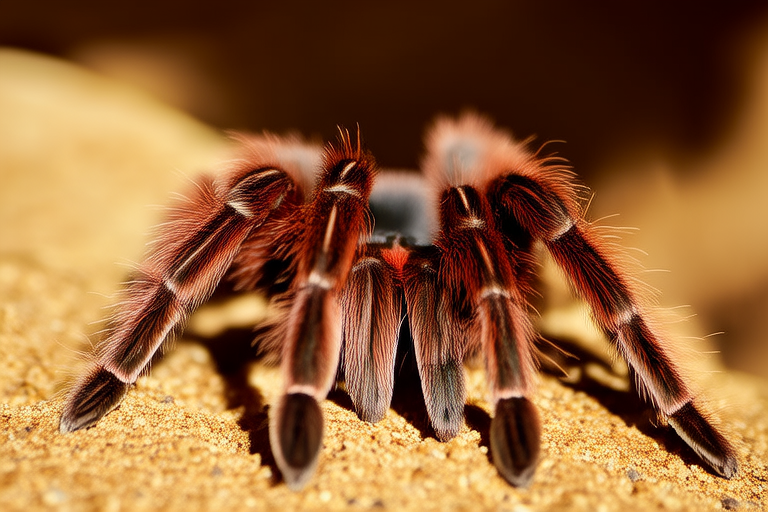Everything You Need to Know Before Adopting a Chilean Rose Tarantula
The Chilean Rose Tarantula (Grammostola rosea) is one of the most popular pet tarantulas due to its docile nature, attractive appearance, and manageable care requirements. However, owning a tarantula comes with significant responsibilities. This guide will provide you with all the essential information to ensure that you can provide the best possible care for your new arachnid friend.
Natural Habitat
Native to the deserts and scrublands of South America, particularly in Chile, Bolivia, and Argentina, the Chilean Rose Tarantula thrives in warm, dry environments. They are well-adapted to sandy soils and rocky outcrops, where they dig burrows for shelter and protection. Understanding their natural habitat is crucial for replicating similar conditions in captivity.
Ideal Living Conditions for Captivity
Creating a suitable environment for your Chilean Rose Tarantula involves several key factors:
- Enclosure Size: A terrarium measuring at least 10 gallons is recommended for a single adult tarantula. Larger enclosures are preferable as they allow more space for burrowing and exploration.
- Substrate: Use a substrate like coconut fiber or peat moss, which retains moisture well and mimics the tarantula’s natural soil. A depth of about 4 inches is ideal to allow for burrowing.
- Temperature and Humidity: Maintain a temperature range between 75°F and 85°F (24°C to 29°C). The humidity level should be around 60% to 70%. A hygrometer and thermometer are useful tools for monitoring these conditions.
- Hiding Places: Provide ample hiding spots such as cork bark, half logs, or pre-made shelters to mimic the burrows they would create in the wild.
Dietary Needs
Chilean Rose Tarantulas are carnivorous and require a diet of live insects. Their staple food includes crickets, mealworms, and waxworms. It’s important to gut-load these insects with nutritious foods before feeding them to your tarantula to ensure it receives adequate nutrition. Feed your tarantula once every week or two, depending on its size and appetite. Juveniles may need to be fed more frequently.
Handling and Interaction Guidelines
While Chilean Rose Tarantulas are generally calm and easy to handle, it’s essential to approach them with caution. Handling should only be done when necessary, as excessive handling can stress the tarantula. Always use a wide, flat tool like a spoon or a tarantula hook to gently lift your pet from its enclosure. Never grab or squeeze the tarantula, as this can cause injury or distress.
Common Health Issues
Proper care can prevent many health issues in your tarantula. However, some common problems include dehydration, mite infestations, and improper shedding. Regularly check your tarantula for any signs of illness, such as lethargy, loss of appetite, or unusual behavior. If you notice any issues, consult a veterinarian specializing in exotic animals.
Tips for Choosing the Right Equipment and Enclosure
Investing in quality equipment is vital for your tarantula’s well-being:
- Enclosure: Choose a glass or acrylic terrarium with a secure lid. Ensure there are ventilation holes to maintain proper airflow.
- Heating Device: A heat mat or under-tank heater placed on one side of the enclosure can help regulate temperature gradients.
- Hygrometer and Thermometer: These tools are essential for monitoring humidity and temperature levels within the enclosure.
- Feeding Tools: Use forceps or tongs to place food items into the enclosure. Avoid directly placing your hands inside.
Responsible Ownership
Owning a Chilean Rose Tarantula requires a commitment to providing a safe and comfortable environment. Before adopting, consider whether you have the time, resources, and knowledge to meet the tarantula’s needs. Responsible ownership also means being prepared for the unexpected, such as veterinary visits and potential emergencies.
Dispelling Common Myths
Many misconceptions surround tarantulas, particularly regarding their venom and aggression. Chilean Rose Tarantulas have relatively mild venom that is not harmful to humans. While they can bite if provoked, they prefer to retreat rather than confront. Another myth is that tarantulas require frequent handling; in reality, minimal interaction is best for their well-being.
Conclusion
Adopting a Chilean Rose Tarantula can be a rewarding experience for those willing to take on the responsibility. By understanding their natural habitat, dietary needs, and care requirements, you can ensure that your tarantula leads a healthy and happy life. Remember, responsible ownership is key to providing the best care for these fascinating creatures.
